Lysosomal dysfunction and inflammatory sterol metabolism in pulmonary arterial hypertension
- PMID: 39847635
- PMCID: PMC12087357
- DOI: 10.1126/science.adn7277
Lysosomal dysfunction and inflammatory sterol metabolism in pulmonary arterial hypertension
Abstract
Vascular inflammation regulates endothelial pathophenotypes, particularly in pulmonary arterial hypertension (PAH). Dysregulated lysosomal activity and cholesterol metabolism activate pathogenic inflammation, but their relevance to PAH is unclear. Nuclear receptor coactivator 7 (NCOA7) deficiency in endothelium produced an oxysterol and bile acid signature through lysosomal dysregulation, promoting endothelial pathophenotypes. This oxysterol signature overlapped with a plasma metabolite signature associated with human PAH mortality. Mice deficient for endothelial Ncoa7 or exposed to an inflammatory bile acid developed worsened PAH. Genetic predisposition to NCOA7 deficiency was driven by single-nucleotide polymorphism rs11154337, which alters endothelial immunoactivation and is associated with human PAH mortality. An NCOA7-activating agent reversed endothelial immunoactivation and rodent PAH. Thus, we established a genetic and metabolic paradigm that links lysosomal biology and oxysterol processes to endothelial inflammation and PAH.
Conflict of interest statement
S.Y.C. has served as a consultant for Merck, Janssen, and United Therapeutics. S.Y.C. is a director, officer, and shareholder in Synhale Therapeutics. S.Y.C. has held grants from Bayer and United Therapeutics. S.Y.C. and T.B. have filed patent applications regarding metabolism and next-generation therapeutics in pulmonary hypertension (US 10,925,869 B2, “Compositions and methods for treating pulmonary vascular disease”; PCT/US2015/029286, “Coordinate control of pathogenic signaling by the MIR-130-301 family in pulmonary hypertension and fibroproliferative diseases”; PCT/US2018/062013, “Compositions and methods for administering a YAP1/WWRT1 inhibiting composition and a GLS1 inhibiting composition”). S.Y.C., L.D.H., and I.B. have filed patent applications regarding the therapeutic targeting of NCOA7 (US 11,773,391 B2, “Therapeutic and diagnostic target for SARS-CoV-2 and COVID-19”; PCT/IB2023/055431, “Methods and compositions for treatment of inflammation and inflammatory conditions”). The other authors declare that they have no competing interests. M.J. is an employee of and holds equity in Sapient Bioanalytics for work unrelated to the current manuscript.
Figures

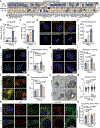
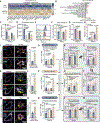

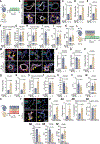
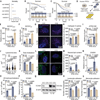
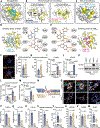
Update of
-
Genetic regulation and targeted reversal of lysosomal dysfunction and inflammatory sterol metabolism in pulmonary arterial hypertension.bioRxiv [Preprint]. 2024 Mar 1:2024.02.26.582142. doi: 10.1101/2024.02.26.582142. bioRxiv. 2024. Update in: Science. 2025 Jan 24;387(6732):eadn7277. doi: 10.1126/science.adn7277. PMID: 38464060 Free PMC article. Updated. Preprint.
Comment in
-
Decoding lysosome communication.Science. 2025 Jan 24;387(6732):359-361. doi: 10.1126/science.adv1201. Epub 2025 Jan 23. Science. 2025. PMID: 39847645
References
MeSH terms
Substances
Grants and funding
- R01 HL078946/HL/NHLBI NIH HHS/United States
- S10 OD025041/OD/NIH HHS/United States
- K08 HL166950/HL/NHLBI NIH HHS/United States
- R01 HL124021/HL/NHLBI NIH HHS/United States
- R00 HL161320/HL/NHLBI NIH HHS/United States
- T32 HL129964/HL/NHLBI NIH HHS/United States
- R01 HL151228/HL/NHLBI NIH HHS/United States
- P50 AR080612/AR/NIAMS NIH HHS/United States
- S10 OD023684/OD/NIH HHS/United States
- P30 DK127984/DK/NIDDK NIH HHS/United States
- UL1 TR003163/TR/NCATS NIH HHS/United States
- F30 HL170649/HL/NHLBI NIH HHS/United States
- R01 HL160941/HL/NHLBI NIH HHS/United States
- R24 HL105333/HL/NHLBI NIH HHS/United States
- F30 HL143879/HL/NHLBI NIH HHS/United States
- R01 GM139297/GM/NIGMS NIH HHS/United States
- P01 HL160487/HL/NHLBI NIH HHS/United States
- R01 HL122596/HL/NHLBI NIH HHS/United States
LinkOut - more resources
Full Text Sources
Molecular Biology Databases

